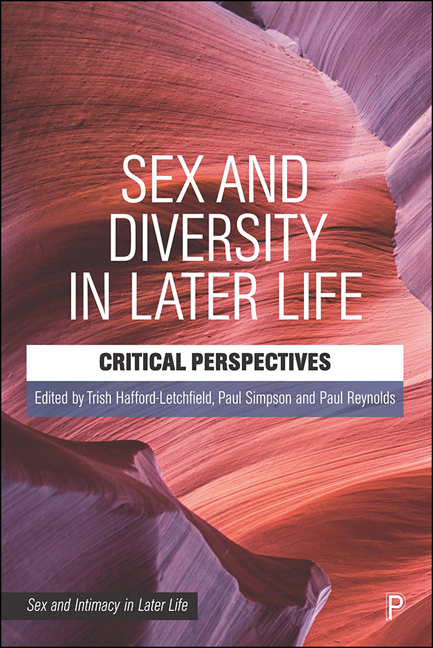Given that the desexualisation of older people emerged as a dominant theme in the first volume (addressing diversity) in this book series, this volume was created specifically to probe this subject further and, in doing so, provide a coherent and critical overview of it as a possible basis for critique and action.
This volume has showcased a variety of work by emerging and established scholars (based in Argentina, Britain, Sweden and Spain). As such, it has featured a mix of theoretical and theoretically-informed empirical work that reflects theorising from social gerontology, social psychology, structuralism, poststructuralism and feminism and some combinations thereof. In various ways, all contributors have addressed the intersecting influences that help to make up later life sexuality. If the first volume in the book series addressed influences of age combined with gender, sexual identification, race and class, this volume has focused a bit more on age as it enmeshes with gender (see the chapter by Clare Anderson), with sexual identification (see the chapter by Jane Youell) and with disability/ableism (see the chapters by Susan Gillen and Paul Reynolds and by Linn J. Sandberg).
Moreover, the main foci of this volume have concerned the cross-cutting physical/embodied, relational, cultural, structural and policy and practice-related constraints on older people's intimate and sexual self-expression. Although such theorising indicates a fairly wide purview, this volume has presented key examples rather than a comprehensive survey of accounts of desexualisation. Nevertheless, it does provide considerable insight and critical reviews of the state of current scholarship on the subject of desexualisation in later life and prompts ideas for further research.
To avoid a simple recap of key points in individual chapters, this concluding section attempts more of a synthesis of overarching themes
and issues that the chapters point to, though, inevitably, we refer to individual authors. Subsequently, we move to discuss what this volume indicates about the state of scholarship in an emerging field of knowledge and how this suggests an agenda for research and serves as a precursor to a future volume addressing the resexualisation of the older self. Indeed, the agentic capacities of older people as sexual beings are visible in chapters in this volume, and the subject of resexualisation, often in the face of significant obstacles, appears to be much overlooked in analysis (Simpson et al, 2018).

